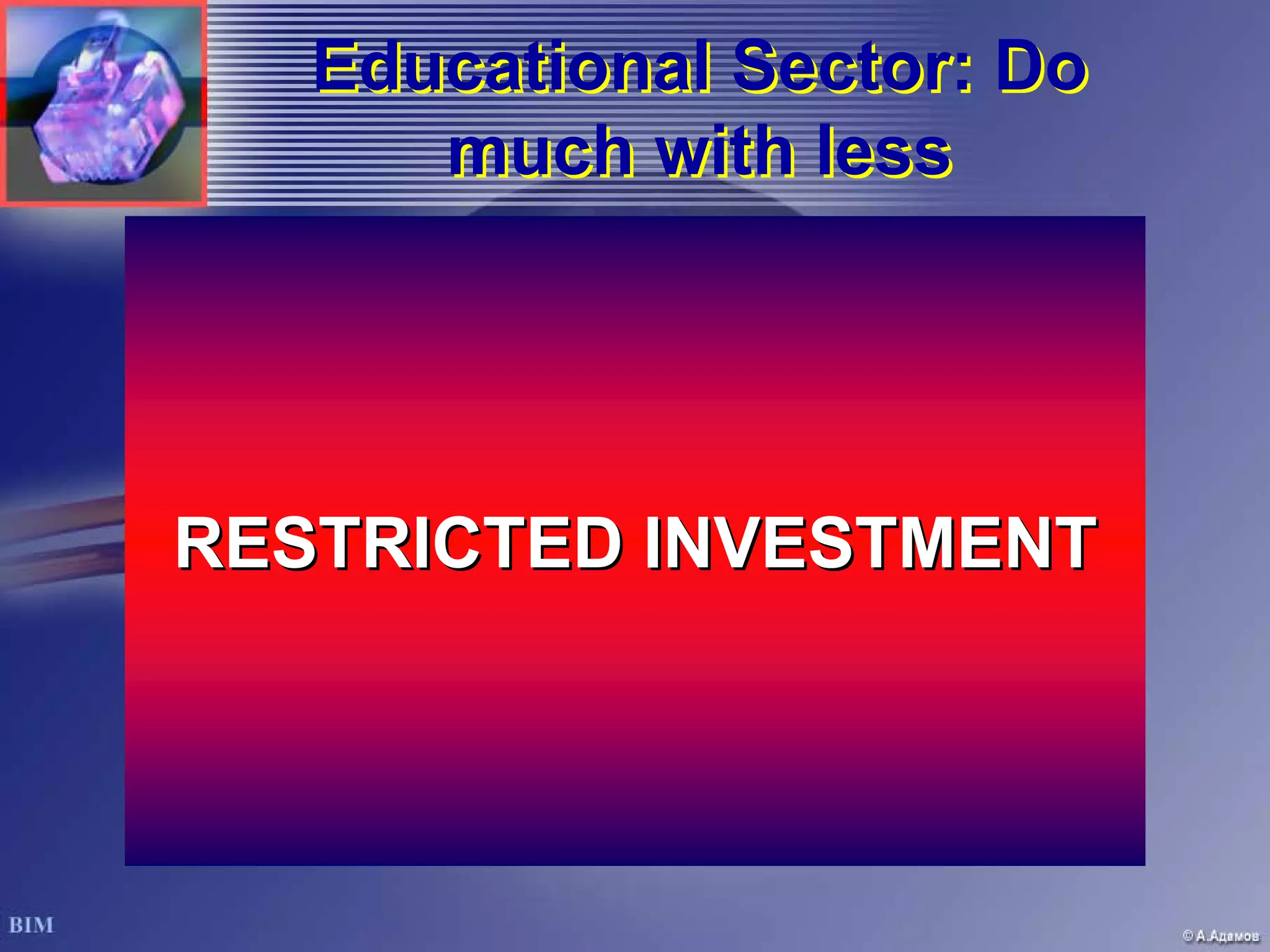The document discusses the role of business process management (BPM) in the success of e-government project implementation. It states that BPM is essential for streamlining processes, removing inefficiencies, and optimizing operations. When applying automation to government processes, BPM ensures efficiency is maximized rather than inefficiency. The document also examines how BPM can be implemented in the public sector and educational institutions to do more with less resources through transparency, excellence, and continuous improvement.















